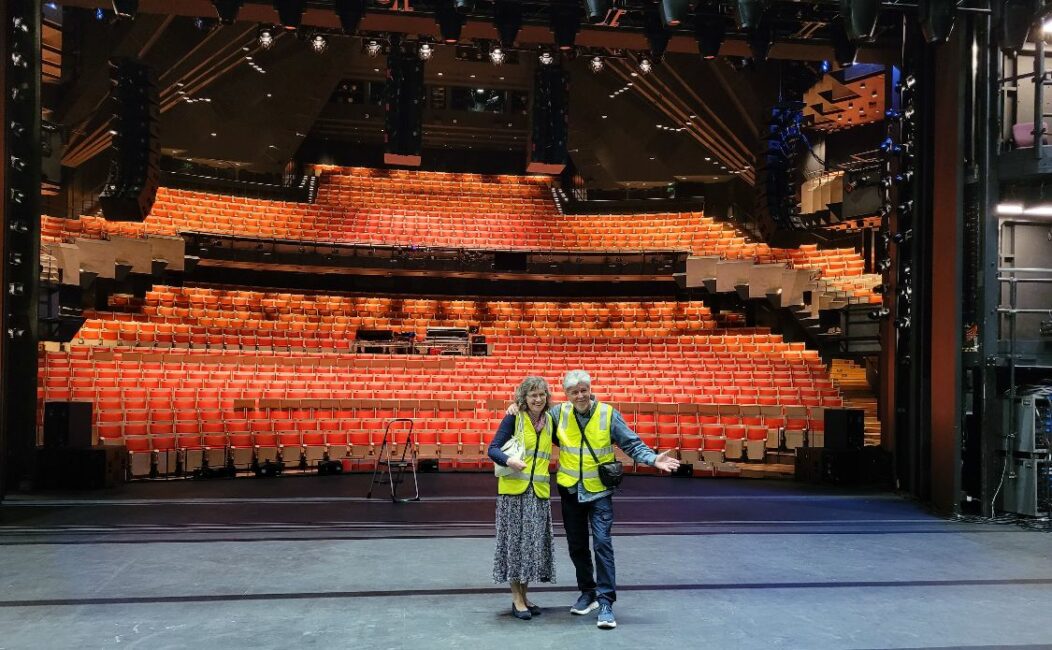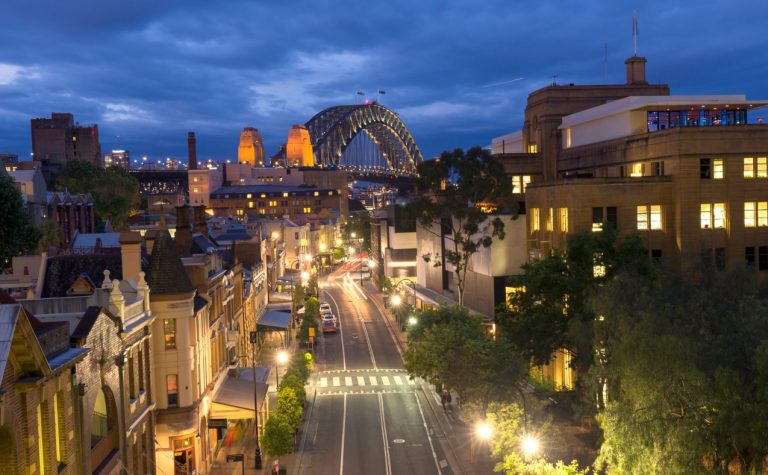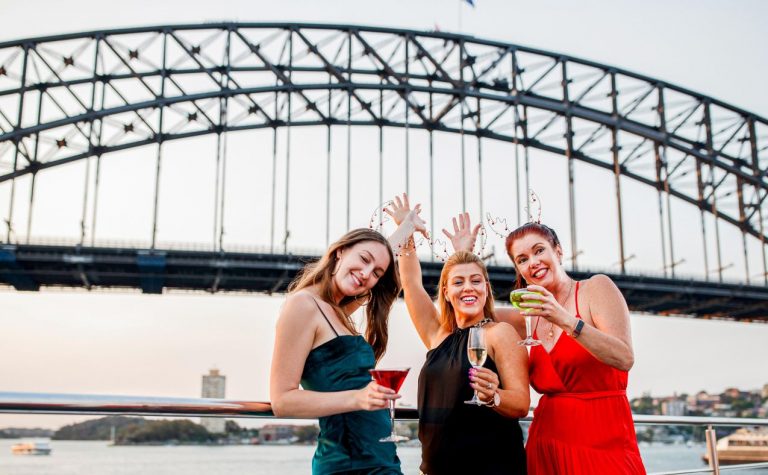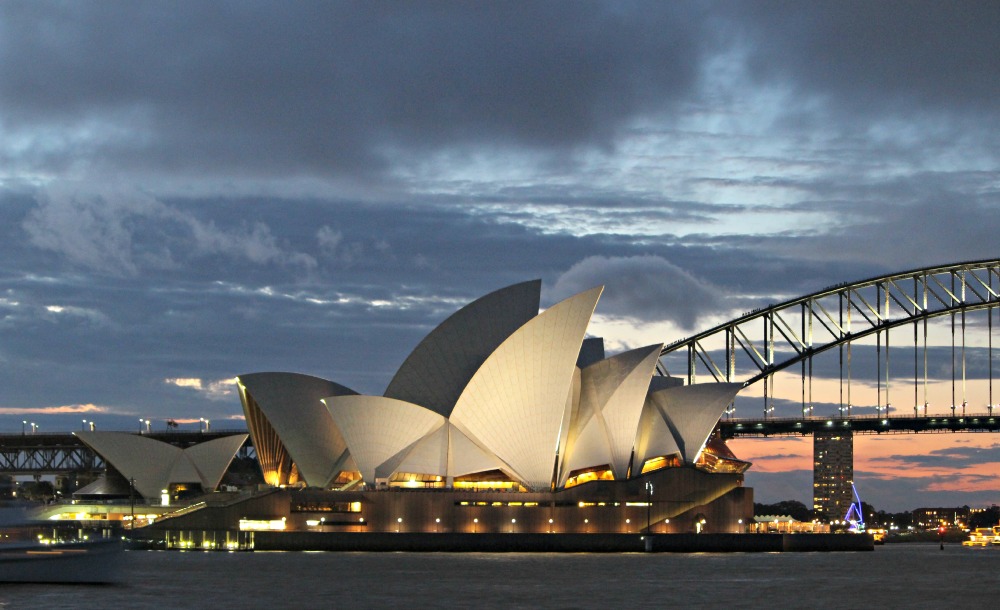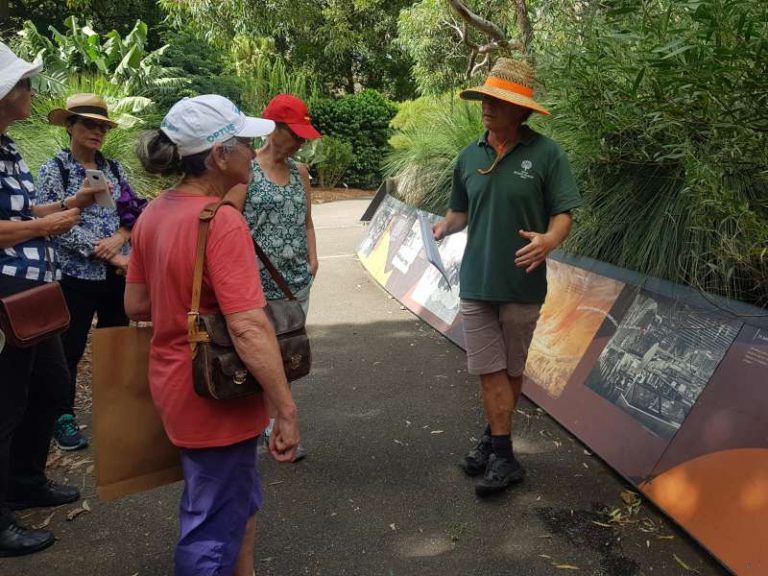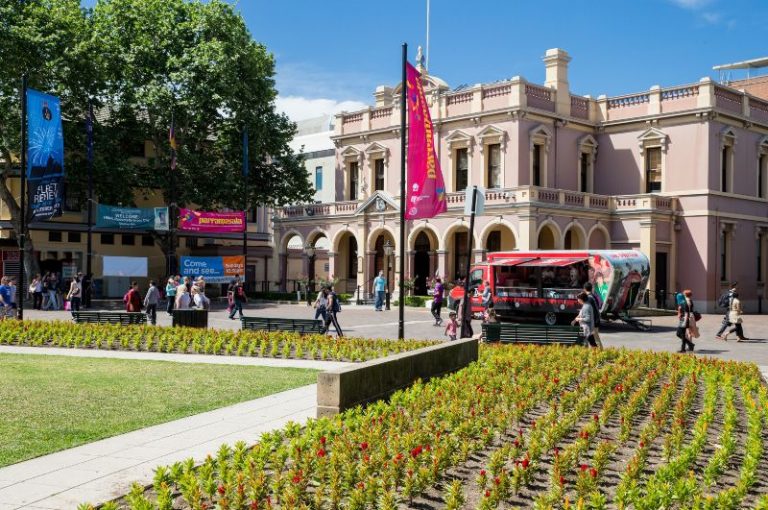Is the Sydney Opera House Backstage Tour Worth It? A Comprehensive Review
Curious about whether the Sydney Opera House Backstage Tour is a good fit for you? Joanne Karcz recently attended the tour and offers her insights.
This page contains affiliate links. You can find our full disclosure policy here.
The Sydney Opera House Backstage Tour
An early start
Shortly after 6:35 on a crisp Sydney morning, I walked through the Opera House Stage Door to join a Backstage Tour of the Sydney Opera House.
Unlike the regular Sydney Opera House Tour, which delves into the history and legends of the
Opera house, this Backstage Tour of the Opera House takes you behind the scenes, onto
stages and into dressing rooms. It’s an early start. We are asked to meet at 6:45 for a 7am start.
As I sit and wait for the rest of my small group to arrive, tradies pass in single file in front of me, the tools of their trade hanging from leather belts strung around their waists. A red warning light flashes above a door. Banging and clattering of metal construction work and the beep, beep, beep of a reversing forklift truck come from further within the building.
Heading Backstage
With warnings not to photograph scenery, costumes or people working, Alan, our guide, hands out bright yellow vests with BACKSTAGE printed on the back. We’re standing in a large, cavernous space and the “two sets of sails are above us,” explains Alan. Below us, “There are 50 truck movements a day.” They carry scenery, catering and other goods.
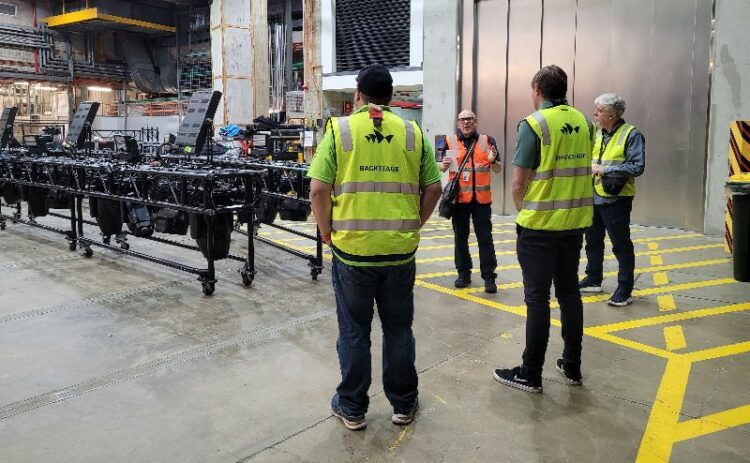
Three theatres make up the performance spaces on the ground level with the Opera and
Concert Hall above them. We’re about to go behind the scenes. Pushing open a thick, heavy door, Alan leads us into the scenery dock of the Joan Sutherland Theatre. This theatre is where opera and ballet are performed.
The Biggest Elevator in Sydney
Scenery is usually stored in the scenery dock. Today, there are rows of lights and sound equipment for a music concert. The stage is above us. Alan points to what he describes as “the biggest elevator in Sydney.” He presses a button, and the huge metal doors slide open.
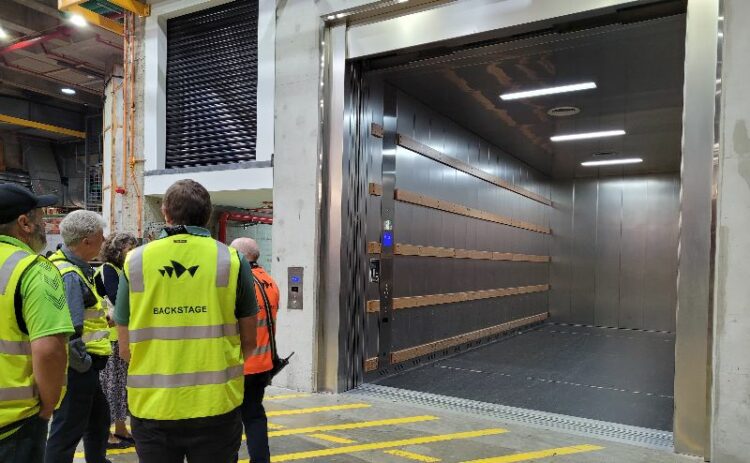
Someone asks, “Has it ever broken down during a performance?” Alan chuckles and nods his head in the affirmative. He tells us that in the Opera of the Three Queens, the elevator stuck after Act One. They couldn’t change the set. With the audience’s permission, Act Two went ahead with the set from Act One.
There are plenty of stairs
We follow Alan up a spiral staircase, puffing slightly when we get to the top. Looking over a barrier, we can see the old “revolve” down below us. It was sacrificed when the stage was updated. Now what’s called a “pancake revolve” rotates the scenery.
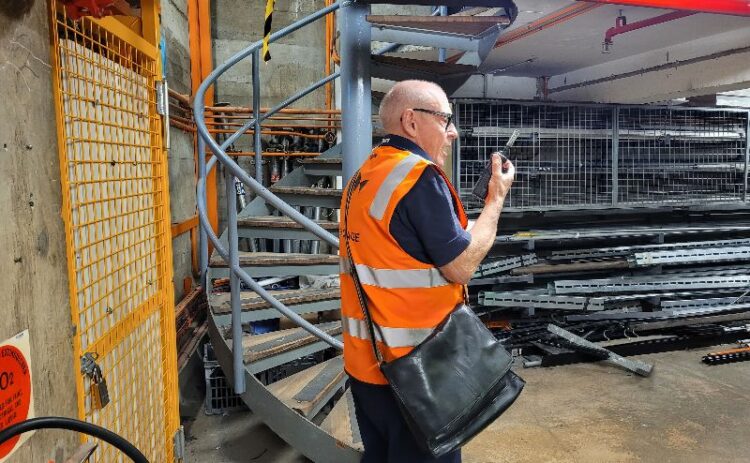
Terms performers use for “Good Luck”
At different points in the tour Alan shares snippets of theatre lore. How two operas rotate daily at the opera house to allow the singers to rest their voices. That Opera singers say “toi toi toi” before a performance for good luck. And instead of the “break a leg” said to actors before a play, dancers – who literally cannot afford to break a leg – will say “merde” (literally “shit”) or in
Australia, “chookas.”
This expression “chookas” derives from the word “chook” meaning chicken. Alan says that in hard times (when eating chicken was a rarity), a performer would sneak a look out through the curtains before the performance. If they saw a full house, it meant that they’d be able to have chicken for dinner.
Sound Proofing
The orchestra pit is covered over when we visit. The noise down here would be incredible when the orchestra is in full flight. The musicians all wear earplugs.
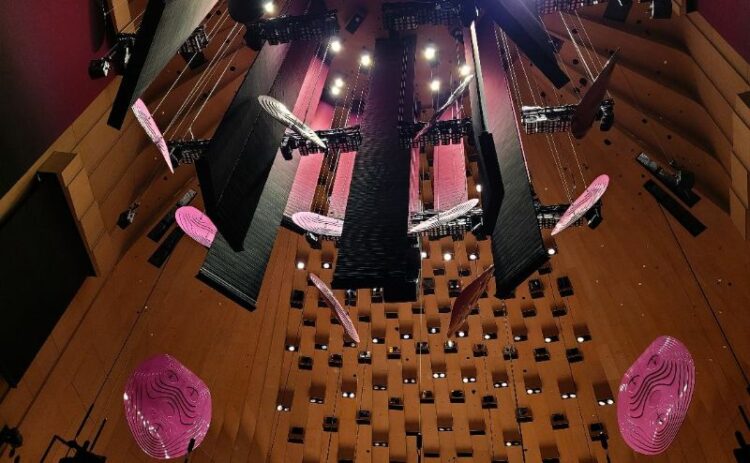
As we continue the tour, I notice that all doors are thick and heavy, providing necessary sound proofing. Carpeting also dampens the sound.
The Joan Sutherland Theatre
It’s time to shine, and we step onto the stage of the Joan Sutherland Theatre. Alan points to complex mechanisms above our heads. They operate the scenery. One of the guests is a dancer from South America. She walks to the front of the stage and does a pirouette exclaiming “This is my dream.”
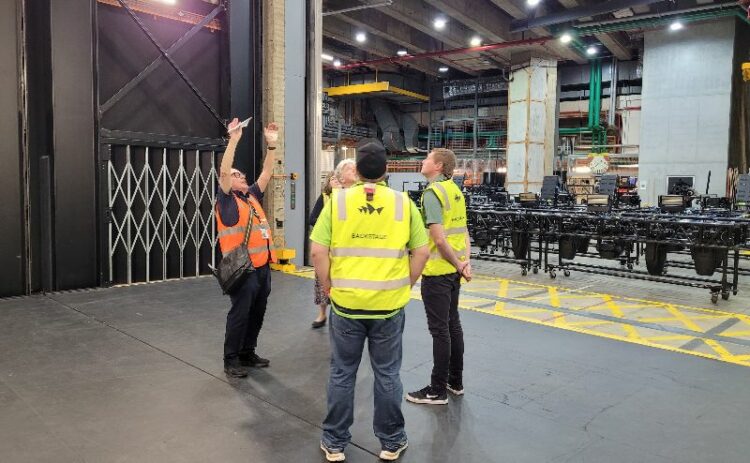
A Fire
Alan explains that there’s always a fireman on duty during a performance. Once, during a dramatic scene in Tosca, a map caught alight. One of the players threw a glass of water over the flame but it didn’t extinguish the fire. The duty fireman ran onto the stage with an extinguisher and put it out. “Always expect the unexpected in live theatre,” says Alan.
Learning the Lingo
We see the ‘traps’ used to raise and lower actors during performances, learn the terms PS
(prompt side or stage left), OP (opposite prompt or stage right) and SM (stage manager) and
hear why it’s bad luck to whistle in the theatre.
Squeezing into a tiny lift, we continue our backstage exploration. It’s a bit of a rabbit warren, and Alan comments, “I still get lost.”
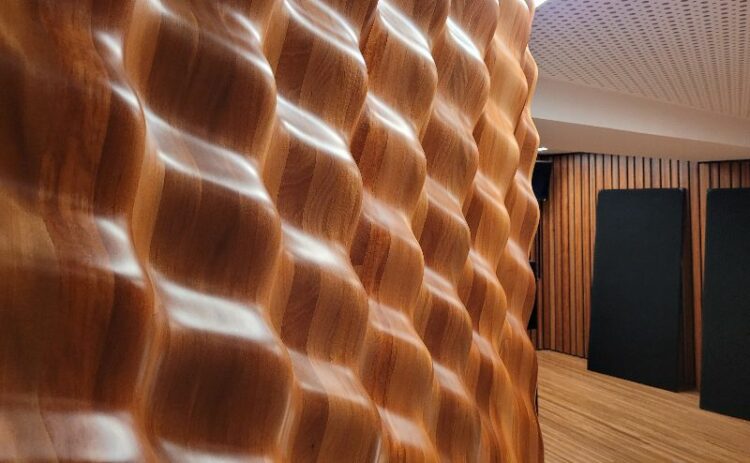
On stage in the Concert Hall, I, noticing the new (to me anyway) wavy wooden panels, gently run my fingers over the smooth surface. They were recently added as one of the recent measures employed to improve sound quality in the Concert Hall. A guest comments in her lilting Scottish accent that the Australian hardwood “smells lovely.”
The Dressing Rooms
Alan leads us past Dame Joan Sutherland’s dressing room. Number 15, she used it when performing at the Sydney Opera House between 1974 and 1990.
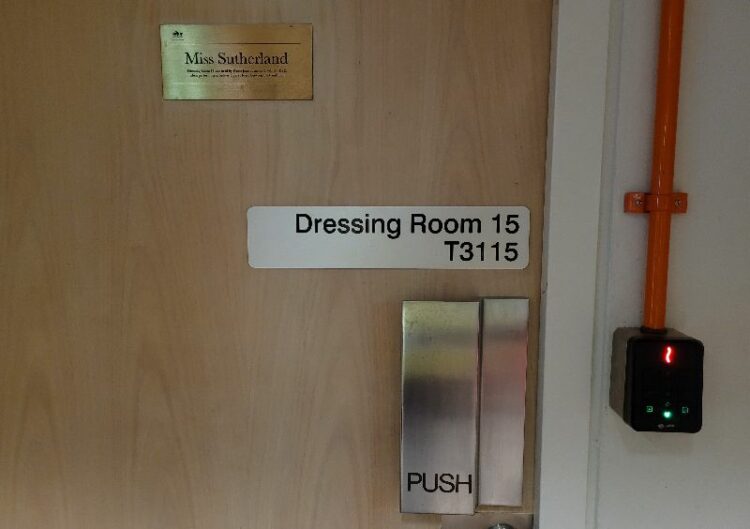
Inside the Conductor’s Dressing room, a guest sits down at the grand piano and tinkles. The rest of us peer out through the oblong window at the Sydney Harbour Bridge and the P&O cruise ship moored at Circular Quay.
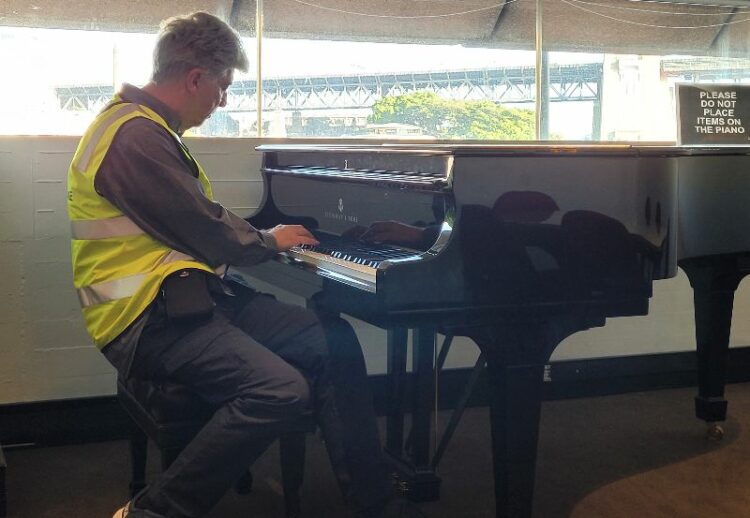
There’s a table and chairs and a comfortable lounge but I can’t see where the conductor will change. In our haste to see the view, we all walked right past the bathroom and dressing room with make-up mirror.
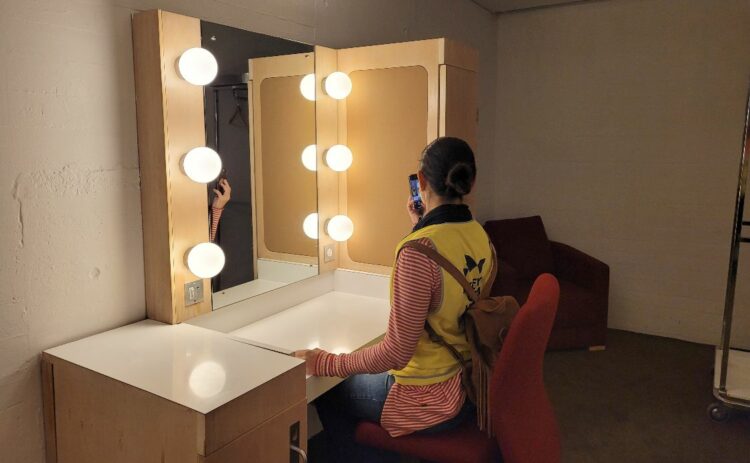
Breakfast
An inviting smell of coffee greets us as we enter the greenroom. The backstage tour of the Sydney Opera House includes a generous breakfast here. Before we sit down, Alan points to the digital clock. It reads 8:53. All clocks in the Opera House are synchronised with this one,
ensuring that no one is late for their performance.
While we work through our delicious two-course breakfast washed down with tea or coffee, orange juice and water, our small group chats about the tour, with Alan fielding any remaining questions. Someone comments “It was worth coming in early.” His wife adds that “It was amazing.” I agree.
Need to know
- The Backstage Opera House Tour operates daily and includes breakfast.
- Meet at 6:45 for a 7am start
- Bookings are required.
- Duration: Approx 2 and a half hours
- The tour is not accessible. There’s a lot of walking and over 300 stairs. People with mobility issues may want to consider the Mobility Access Tour.
You can find out the current prices or book a Back Stage tour of the Opera House here
Joanne Karcz joined the Backstage at the Opera House Tour at her own expense.

